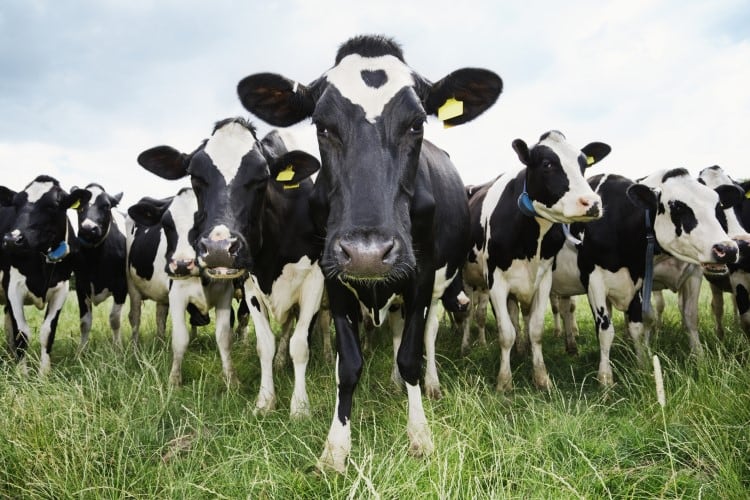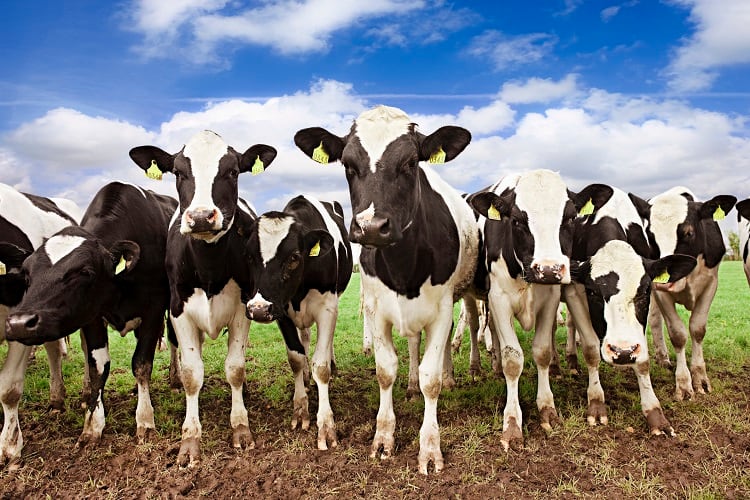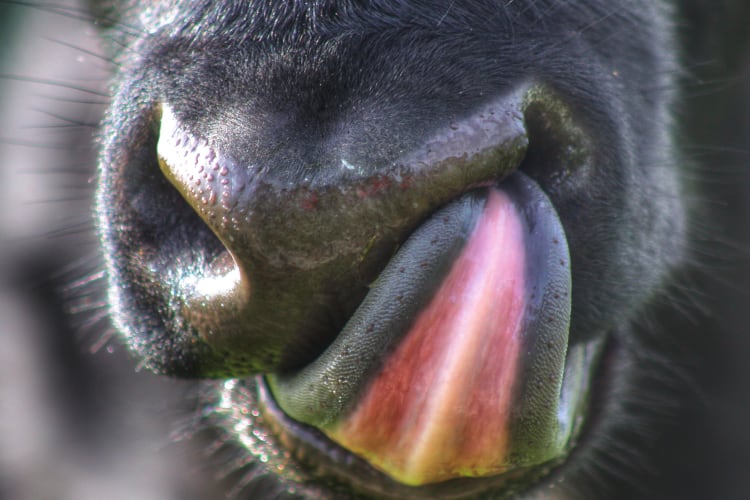As many as 28 members of the Congress and the Senate have signed a letter asking USDA secretary Thomas J. Vilsack to consider introducing targeted relief measures to help organic dairy farmers cope with rising production costs. Writing on behalf of the US organic dairy and poultry sectors, the signatories told Vilsack that ‘the situation is dire and requires your immediate attention’.
“While the agriculture sector overall is struggling with a multitude of challenges that have affected the market, organic is a unique supply chain and market that requires tailored solutions to meet the needs of producers,” the signatories stated. “International trade challenges specific to organic, persistent drought, and the lack of a stable domestic supply of certified organic feed have created a dire economic situation for organic livestock farmers across the US over the last two years.”
The letter details that organic feedstuffs – which typically make up over 50% of the total cost of production – have risen sharply over the last two years, with organic soybeans jumping 110% from January 2021 to US$19.37 per bushel. This is ‘creating unsustainable circumstances that could lead to farm closures, reduced competition and ultimately, limited consumer choice,' the signatories claimed.
The representatives stressed that despite the various emergency relief measures made available by the government through the USDA, 'these efforts have unfortunately not been sufficient to address the current situation facing organic livestock producers'.
Ed Maltby, the executive director of the Northeast Organic Dairy Producers Alliance (NODPA), said that targeted support is required to meet the very specific circumstances around which organic dairies operate. “There are no safety net programs specifically available for organic dairy that address economic spikes in the supply of feed and inputs,” he told us. “Organic milk buyers have given small pay price increases in 2022 (75c to $1 per 100lbs), but say they are not able to provide either a Market Adjustment Premium or a temporary pay price increase to support farmer cash flow as they have in the past.”
He said current payment programs, such as the Dairy Margin Coverage (DMC), have offered some help in the past, but not so much this year. “The 2018 Farm Bill authorized the new DMC program, which is a voluntary risk management program for dairy producers designed for conventional dairy to insure protection against spikes in inputs with a low pay price. It is based on conventional expenses, though organic dairies can apply for the subsidy. The DMC assisted organic dairies in 2020 and 2021, as did the COVID-19 payments, but there have been none of those payments in 2022.”
According to Farm Service Agency data, more than 19,000 farms enrolled into the program in the DMC in 2021, receiving more than US$1.1bn or US$62,000 on average. In 2022, nearly 18,000 operations enrolled, but payments were triggered in August and September, totalling US$76.3m or around US$4,700 per operation.
Asked why NODPA farmers did not benefit in 2022, Maltby said ‘a good proportion’ did not enrol into the program after 2021, although he has encouraged farmers to sign up for 2023. He added however that using the conventional system ‘in no way reflects the losses [organic dairies] are subject to in 2022’. “The average pay price for organic dairy is $32/cwt, averaging $8/cwt under the costs of production,” he told us. “There are disaster programs in the case of drought and other natural disasters, but none that address directly the economic impact on organic dairies.”
Well-established dairies ‘planning their exits’
A major issue this year compared to 2021 and prior is the cost of organic soybean meal, which has tripled – according to NODPA’s data for November, the average cost of production per cwt has risen to around US$40.20, while the average pay price in the northeast has slumped to US$31.86. This paints a grim picture for one of the largest organic dairy regions in the US. “Even the largest and most efficient are losing money with every pound of milk produced,” Maltby explained.
“Farmers are selling land; selling replacement heifers for beef; culling more cows than they would normally; reducing purchased feed and some that can have switched to Grass-Fed - and Grass Fed milk is only receiving an average of US$2 more per cwt. Those that have paid labor are reducing how many staff they employ and, of course, any family labor is working longer hours. As independent businesses who have been using any reserves, they have over the past five years had no access to extended line of credit as their equity is maxed out and some are desperate enough to use credit cards to pay feed bills.”
Maltby also revealed that around 25% of organic dairies in the northeast were in danger of selling out or returning to conventional dairy. “Many well-established organic dairies are planning their exits in the spring,” he revealed.
Quickly means immediately
The letter signatories are asking the government to take action ‘quickly’, but just how fast should those in power act on this issue? “Quickly should be translated into immediately,” Maltby said, “which can be done by USDA with or without an appropriation in the upcoming Omnibus Bill. “Organic dairies are paying now for winter feed as there is no grazing, so their cash demands are high and the feed suppliers tolerance to extending debt has been stretched.
"Best-case scenario is that adequate payments will be made in the next few months as most dairies are already enrolled with USDA FSA because of COVID payments. This will give farm families the bridge to survive until spring and give them the opportunity to make decisions without the pressure of bankruptcy. Worst case scenario is that no money if offered, too little money is offered to make any difference, or there are too many conditions attached that make it difficult for farmers to qualify for the emergency relief.”
According to Maltby, the USDA can use examples from the past to assist organic dairies during the current economic crisis. “There are programs that USDA have used in the past for conventional dairies face with similar economic problems,” he explained. “One existing program that was used in 2010 and 2017 was the Dairy Economic Loss Assistance Program (DELAP) funded through appropriations with immediate payment through the USDA Farm Service Agency.
“We are advocating for $6/cwt with a cap of six million pounds based on 2021 production records based on organic dairy as a commodity. The USDA defined organic as a commodity when they proposed an Organic Check-Off program in 2016 and Congress gave organic operations relief from paying into any conventional check-offs. We hope USDA will either use existing disaster funds or work with Congress to attach a specific amount of money to the Omnibus appropriations bill that will be before Congress next week.”
In the longer term, there are supply chain issues that should be addresses according to the NODPA exec, from stabilizing the US organic feed market to incentivizing farmers during the three-year transitional period to organic production. A strong internal organic grains market would be key to countering the type of volatility that’s affecting dairies – and Maltby suggests investment is needed to achieve this, as well as stricter enforcement of organic regulations to limit fraud. He said the USDA should invest in ‘more size-appropriate infrastructure in underserved regions that can provide services to potential organic grain growers’ as well as in research and production of regionally-adapted organic seed.
Consumers back organic milk producers
One piece of good news is that sales of organic milk in the US have been mostly on an upward trend since 2008 - but the average organic retail price for half gallon is also increasing, leading to questions if consumer sentiment could suffer as a result. According to data released by the USDA Agricultural Marketing Service, the average retail price for organic fluid milk during 2022 has jumped from US$4.26 in January to US$4.56 in November per half gallon, with some regions such as Pittsburgh, PA seeing an average increase of US$1.79 year-on year. Despite this, consumer sentiment has remained positive, with sales of organic milk up 1.1% on 2021 while conventional milk sales are down 2.7%.
"The consumer supports organic agriculture and milk that is produced from cows that graze, aren’t exposed to treatment with antibiotics, and are fed with a balanced ration that is grown not using synthetic fertilisers, pesticides and herbicides,” Maltby explained. But shoppers may not see the full picture, as he pointed out: “Consumers believe the marketing of the organic dairy brands that they are supporting and assume that organic dairy farm families are receiving a good price to sustain a good standard of living for their quality product - not a pay price where they are losing at least US$6 per cwt and receiving just 27% of the retail price.”
The USDA has been contacted for comment.



